- Administrator
- Albums and Singles
 This is a landmark album in the Acid Mothers Temple oeuvre for a variety of reasons, but not all of them are good.  On the positive side, Cotton Casino has returned to the fold and Kawabata Makoto and company have ambitiously stepped out of their comfort zone to attempt a "true electric jazz album" in homage to Miles Davis' 1970 masterpiece.  Unfortunately, the end result of their bold experiment is a bit of an exhausting, self-indulgent, and muddled mess.
This is a landmark album in the Acid Mothers Temple oeuvre for a variety of reasons, but not all of them are good.  On the positive side, Cotton Casino has returned to the fold and Kawabata Makoto and company have ambitiously stepped out of their comfort zone to attempt a "true electric jazz album" in homage to Miles Davis' 1970 masterpiece.  Unfortunately, the end result of their bold experiment is a bit of an exhausting, self-indulgent, and muddled mess.
Despite my historic cautiousness and skepticism towards Kawabata Makoto's work, I actually plunged into this album with pretty high expectations.  I love Bitches Brew, so the idea of Davis' vision colliding with AMT's deranged psychedelic chaos seemed like it had a lot of potential.  Also, the cool cover art, the return of Cotton Casino, and the sheer volume of material here (it is a double album) seemed to indicate that this would be major artistic statement of sorts.  And it seemed like it was...initially.
At the very least, Tsuyama Atsushi and Higashi Hiroshi do an impressive job replicating the queasily over-processed sax and distinctive synth sound of the original.  In fact, I found myself kind of loving the opening title track when the rhythm section kicked in with a heavy disco groove.  Unfortunately, my excitement curdled by the song's halfway point and never, ever recovered.  The nadir came when Stoo Odom repeatedly exclaimed "son of a bitches brew!" and cackled maniacally, but that was merely one in a host of many serious shortcomings and bad ideas (a category in which I include the wince-inducing, sophomoric humor of the song titles).
The insurmountable, fundamental flaw that torpedoes the entire album is that Son of a Bitches Brew is essentially 75-minutes of everybody in the band wildly soloing and making weird burbling noises at once.  There is none of the space, structure, and sensuousness of the original, just unending cacophonous squall.  The rhythm section intermittently elevates the disjointed noodling into something much better by sometimes locking into a barreling groove, but the album's unusual mixing significantly weakens the drums' impact.  That is a serious problem, as some raw, visceral power could made these songs a lot more enjoyable.  Finally, and most exasperatingly, this album is not actually much of a diversion from what I expect from Acid Mothers Temple: there is certainly a lot more soloing and freedom, but it is still basically a heavy psych-rock album peppered with more beat-less, structureless freak-outs than usual (and a sax thrown in).
That said, I suspect that this album will be very polarizing and that many, many people will disagree with me.  Acid Mothers Temple's insanity, explosiveness, and excess can be very endearing at times and Son of Bitches Brew might be a high-water mark in all three regards.  To my ears, however, it is mostly a one-dimensional, senseless regurgitation of AMT's usual spew of space-y whooshing and guitar noise that drags on for well over an hour with little perceptible variation (albeit with somewhat higher artistic pretensions than usual).  I honestly do not know how anyone could listen to this album in its entirety.
Samples:
 
Read More
- Administrator
- Albums and Singles
The most recent solo incarnation of pioneer Campbell Kneale (Birchville Cat Motel, Black Boned Angel, et al.), this is the definitive OLWDTW release spanning two discs. Thousands Raised To The Sixth is masterful exploration of texture and washes of sound that are strangely melodic and percussive. Nobody can reinvent himself with sound like Kneale, and this release shows him at his best yet.
Edition: 500 2xCD, oversized 5.5" fold out card with two art inserts, each disc in a black envelope, and placed in a slim slip cover.
More information here.

Read More
- Administrator
- Albums and Singles
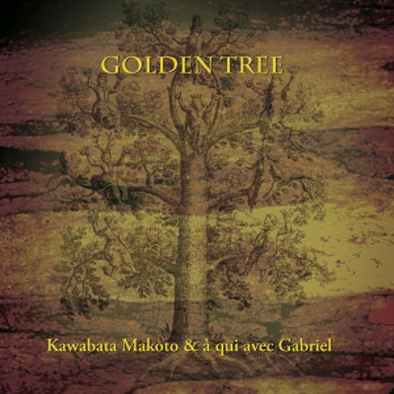 There is no denying that Kawabata Makoto is an uncompromising and unique artist, but the sheer volume and unbridled excess of his work as Acid Mothers Temple has been yielding diminishing returns for me for quite some time.  Consequently, I always look forward to his more experimental and intimate diversions, such as this uneasy, drone-heavy collaboration with enigmatic Japanese accordionist à qui avec Gabriel. The two musicians make an inspired and complementary pairing, but Golden Tree does not entirely avoid some of Makoto's more irksome tendencies.
There is no denying that Kawabata Makoto is an uncompromising and unique artist, but the sheer volume and unbridled excess of his work as Acid Mothers Temple has been yielding diminishing returns for me for quite some time.  Consequently, I always look forward to his more experimental and intimate diversions, such as this uneasy, drone-heavy collaboration with enigmatic Japanese accordionist à qui avec Gabriel. The two musicians make an inspired and complementary pairing, but Golden Tree does not entirely avoid some of Makoto's more irksome tendencies.
Kawabata's greatest strengths have always been spontaneity, enthusiasm, imagination, and his very free, "anything goes" approach to his music, so it is no surprise that Golden Tree's three pieces sound like improvisations rather than compositions.  Thankfully, he and à qui avec Gabriel seem to have quite a comfortable chemistry, even if it sometimes veers into somewhat risky and puzzling territory as the album unfolds.  The two certainly have no misgivings about lingering in the precariously no-man's land between "self-indulgent" and "boldly innovative."
The album's first piece, "A Sacred Tree at Nemi," however, plays things relatively straight, embellishing the abstract moans and shimmering drones of Makoto's guitar with sustained accordion swells and à qui avec Gabriel's ghostly, ritualistic-sounding vocals.  It is an excellent piece, but it does not stray terribly far from the established drone template, aside from its subtly uncomfortable dissonance.
The proceedings get significantly weirder during the epic, 35-minute centerpiece, "Solid Torus," which starts off in pointillist, lurching fashion before plunging into its long, strange trajectory in earnest.  Even after several listens, I still do not know quite what to make of it.  I can definitely say that it is bloated, schizophrenic, and meandering though.  And that Makoto and his foil sometimes seem to be playing two very different songs.  As unpromising as that might sound, however, it ends up being perversely compelling and definitely seems deliberate rather than accidental.
For her part, à avec qui Gabriel's playing is often surprisingly straightforward and melodic, but it sounds tense and unnerving when coupled with Kawabata's subtly ugly and shrill bed of dissonantly clashing drones.  The overall effect is like a somewhat unhappy accordionist grudgingly attempting to serenade young lovers outside a Parisian cafe, but being nearly drowned out by someone blasting a Birchville Cat Motel record next door.  I can honestly say that I have not experienced anything quite like that before, so the piece is ultimately successful despite its flaws.
The duo save their most unqualified triumph for last, however.  The evocatively titled "A Priest of Nothingness Under the Moon" is deceptively simple, yet remarkably effective.  It is essentially built upon a very minimal, fragile, and endlessly repeating plucked guitar motif and not much else, but its nagging insistence holds the piece together beautifully amidst the unfolding melancholy accordion improvisations and anguished guitar moans and howls.  I have no idea how Makoto managed to get some of these sounds, as he is only credited with guitar and it sometimes sounds like someone viciously bowing a distorted cello–it gets pretty visceral.  Also, à avec qui Gabriel's intermittent angelic vocals are harshly distorted in a very appealing way.
Ending the album on such a focused, cathartic, and emotionally resonant note necessarily makes the other pieces seem comparatively a bit baggy and wandering, but such a crescendo makes for a very satisfying album sequence-wise.  Also, there is no way "Priest" would have had the same impact if the preceding 45-minutes had been similarly raw, so I have to conclude that Kawabata and his mysterious accordionist friend knew exactly what they were doing, even if they took a sometimes puzzling route getting to their destination.  Golden Tree occasionally seems to overstay its welcome or have trouble finding its way at various points, but it ultimately coheres into quite a fine and unusual whole.
Samples:
 
Read More
- Administrator
- Albums and Singles

A relatively new solo project out of Canada, Bryan W. Bray's discography is currently brief, but with releases such as this, I hope to see that list grow dramatically in the near future. Hints of drone metal, pure harsh noise, and unclassifiable experimentalism abound on this all too brief tape.
Few albums completely grab me the moment they start, but the miasma of guitar that opens "Glimpse of Overlapping Dimensions" did just that.Layered guitars that are dark and post-apocalyptically gray, but also ones that are soaring and ethereal float together in the no man’s land between evil drone and warm ambience in a tenuous balance, before a dense wall of static swallows both.The resulting sound has more in common with harsh noise than what preceded it, but with a sense of discipline and control to it.As it continues, identifiable guitar remains that that is reminiscent of some of Hijokaidan's earlier work.The outro of detached, echoing guitar is a perfect closer.
"Forest Passageway, Hallway to the Void" leads off more dissonant than its predecessor, with a buzzing interference cutting through the ringing guitar notes and expansive vibrations.Just as it seems to settle in comfortably, heavily processed noise sweeps in, all over the low and high ends of the spectrum to make for something again more reminiscent of Merzbow, albeit with a symphonic metal undercurrent.
"Birds Plunging through the Walls of the Ocean" launches right in with the noise, leading to a less dynamic track.The constant roar puts it in league with the Harsh Noise Walls subgenre, but with the guitar sound and careful variations deep in the mix, it is anything but static and monotonous.For what it is, it is very effective, although I think the more drastic evolutions in the preceding tracks give them an edge.
At three tracks and around 30 minutes in length, it feels almost just like a teaser for future works.Bray takes the unenviable task of mixing music and noise and having the results sound not only consistent, but extremely effective.The multitude of moods and sounds on this release are its greatest strength, from speaker destroying waves of harsh noise to pensive, echoing guitar notes.Together, the result is even more powerful.
samples:
- Glimpse of Overlapping Dimensions
- Forest Passageway, Hallway to the Void
- Birds Plunging through the Walls of the Ocean
 
Read More
- Administrator
- Albums and Singles
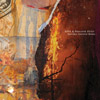 A collaboration between G. Stuart Dahlquist (formally of Burning Witch) and prolific French composer Philippe Petit is sure to elicit some dark, disturbing imagery, and on that front, Empires Should Burn definitely does not disappoint. With guest vocals from Edward Ka-Spel, Jarboe, and Bryan Lewis Saunders, the resulting album is a dark, though not impenetrable slab of metal hued experimental sound collage.
A collaboration between G. Stuart Dahlquist (formally of Burning Witch) and prolific French composer Philippe Petit is sure to elicit some dark, disturbing imagery, and on that front, Empires Should Burn definitely does not disappoint. With guest vocals from Edward Ka-Spel, Jarboe, and Bryan Lewis Saunders, the resulting album is a dark, though not impenetrable slab of metal hued experimental sound collage.
"Vocalists" is a designation used loosely in terms of this album, since all three artists' contributions are most closely aligned with spoken word performances, with each artist supplying their own texts.Ka-Spel's "And Empires Will Burn" is the most engaging in my opinion:comprising almost half of the disc's duration, the 23 minute performance melds clanging gamelan-like metal percussion and grimy noise textures that slowly creep along.The backing track makes slow, cautious changes throughout to keep variation, but not detract from the narration.
Ka-Spel's calm, dramatic delivery of his performance adds to the creepiness of both his words and the sound surrounding it.The two are in perfect harmony, where the words never overshadow the music nor vice versa.The narrative is absent for around the final third of the piece, where the sound takes the focus, increasing the amount of change and variation to be heard.
"The Star Implodes" pairs Jarboe's understated readings with clattering guitars and found sounds to excellent effect.Compared to many of the pieces on here, there is a greater sense of light and space to be heard, even if it is only hinted out."A Vision"'s reading by Lewis Saunders has an intentionally stilted, uncomfortable cadence to his whispered voice that just heaps on the discomfort.
There are two instrumental pieces included as well, which meld in perfectly with the overall fell of the album."Sweet Dreams Asshole" takes distant chiming bells and a creepy layer of noise, both of which could be cliché but instead come across quite effective in channeling a dark, sinister mood that is only exacerbated by Dahlquist's seemingly wordless snarls."Apocryphatic_Ally" follows Jarboe's performance to close the album, and plunges it again into darkness with cautious restraint; electronic tinged noises abound but never lose a natural, uncomfortable organic feel.
I am usually not one fond of spoken word performances, as I feel too often they come across not only as pretentious, but also tend to overshadow any musical accompaniment they might have.On Empires Should Burn, they feel less like that traditional style, but more like a collection of ghost stories with sonic accompaniment.The fact that both the words and music are captivating is no easy task, and I can’t think of any time it worked so well other than Velvet Underground's "The Gift" or Wire's "The Other Window."
samples:
 
Read More
- Administrator
- Albums and Singles
 Fabrika is a new label based out of Athens, Greece, for exclusively vinyl-only limited editions focusing on obscure and up-and-coming minimal synth groups. Their first release, limited to 500 copies, is a sampler of analog synth acts, primarily from Europe, a few of who have since released full-length LPs through Fabrika Records as well. This collection ranges from the complex, pulsating cold wave ambience of NY-based Led Er Est to the bopping "electrobilly" of Berlin-based Jemek Jemowit. Over half of the tracks are from Germany and the general feel of the record is bleak, robotic and danceable with serrated edges.  It is essentially a dance compilation for the disaffected contemporary nihilist.  I envision futuristic sci-fi dancefloor party scenes with a looming, omnipresent antagonist while some of the characters might be overdosing yet no one seems to care.
Fabrika is a new label based out of Athens, Greece, for exclusively vinyl-only limited editions focusing on obscure and up-and-coming minimal synth groups. Their first release, limited to 500 copies, is a sampler of analog synth acts, primarily from Europe, a few of who have since released full-length LPs through Fabrika Records as well. This collection ranges from the complex, pulsating cold wave ambience of NY-based Led Er Est to the bopping "electrobilly" of Berlin-based Jemek Jemowit. Over half of the tracks are from Germany and the general feel of the record is bleak, robotic and danceable with serrated edges.  It is essentially a dance compilation for the disaffected contemporary nihilist.  I envision futuristic sci-fi dancefloor party scenes with a looming, omnipresent antagonist while some of the characters might be overdosing yet no one seems to care.
Commencing the compilation on Side A is Led Er Est's "Doctor Green," a complex and eerie track that gives me the feeling of a psychological thriller with medical experiments.Lebanon Hanover is a UK/Berlin-based duo and their "Kunst" is one of the standout tracks: icy synths & blighted beats manage to be both soothing and alienating, providing a foundation for the English and German vocals.Gertrud Stein, a one-woman electro-punk act, repeats "I can't dance (in a place like this!)" abrasively and robotically, as if she's trapped in a nightmarish nightclub, anxious to get out.Dolina present a pleasant yet dead-pan vocal delivery and lend themselves to a darker side of synthpop danceability, while Martial Canterel—aka Sean McBride, who is one-half of NY synth forerunners Xeno & Oaklander—uses analogue-only array of electronic instrumentation to "douse the dancefloor with petrol" again conjuring imagery like we're dancing our way through the apocalypse.  Closing Side A are two retro-minimal DIY duos from Athens, Selofan (the label owners' project) and Human Puppets, veterans of the European synth scene for over a decade. Selofan's "The Passion of Chris" builds in intensity evoking anxiety then fading seamlessly into "Things Change Fast," filled with seemingly hallucinatory suspense by Human Puppets, who have recently released an album thru Kernkrach in Germany.
Side B of the record is all German-based.Berlin duo Bloodygrave and Die Lust (sprung from their previous band, Rotten Western Kulture) use playful, almost bubbly melodies paired to contrast their emotionless, repetitive and processed vocals on "Frage Der Technik" (translation: "Question of Technique"), which I imagine being delivered in a deadpan, shoe-gaze style.  Sickdoll introduce the first guitar of the compilation with a surfer rock-esque jam with hints of despair—maybe surfing on a bad acid trip—backed with with an underlying an OMD-esque melody, some squiggly, quirky noise elements and complete with brooding vocals declaring "Das Meer Ist Blau" (translation: "The Sea is Blue"—and the singer sounds blue indeed).  Die Selektion is a young Italian/German trio who use thumping beats in a thick wave clearly influenced by the likes of Nitzer Ebb and Grauzone, with horns that go off like sirens amidst a distant alternative world like Blade Runner.Petra Flurr + Modernista's "Medizine" gives off angsty, aggressive vibes with curt vocals, before a track by self-proclaimed "electrobilly" (which may sound like you'd imagine it to) Berlin-via-Poland artist Jemek Jemowit blends humor and his unique, outsider-chic style and makes it work (and who also has a full LP out now as well as a video for the title track, Zemsta).  Alienphobie, deemed "subterranean intergalactic hitchhikers," are playfully kinky in "Überall" (translation: "Everywhere") while Velvet Condom dish out psychedelic robot-noise and singer who sounds concerned, like she's running away from someone while singing.Phoenix Catscratch, the compilation's closing act, reminds me of something along the lines of the Virgin Prunes being represented as an animatronic band in a video game from the future.They have since broken up but their only album was recently released from Fabrika's CD-based sister label, Dead Scarlet, in an edition of 500 copies.
I tend to gravitate towards either other-worldly/psychologically stimulating music or experimental dance/beats and these tracks embody a bit of both elements: a progressive mentality combined with some mindless danceability.  As a whole, recognizing the collection as one entity, it is a glimpse into a mindset that is post-consumer DIY and borderline anarchist electro-punk.  Due to its obscurity, it is a hidden world that must be sought after in order to discover and it is refreshing to have to dig a bit in order to find something worth looking for.  Having partnered up with Berlin's Drop Dead Festival last year, hopefully Dimitri and Joanna from Fabrika will do so again this coming October 2012 and assemble another rare showcase of this underground synth scene that is bubbling up in Berlin and beyond.From this compilation, Jemek Jemowit, Die Selektion, Petra Flurr & Modernista, and Lebanon Hanover have all since released albums on Fabrika, all vinyl limited editions of 300 copies.
Monosynth is limited to 500 copies, available from Fabrika (along with their other releases) or from Dark Entries in the US.
samples:
- Led Er Est - "Doctor Green"
- Lebanon Hanover - "Kunst"
- Bloodygrave & Die Lust - "Frage der Technik"
- Jemek Jemowit - "Laktose"
Read More
- Creaig Dunton
- Albums and Singles
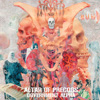
While Yasutoshi Yoshida is not nearly as prolific as he was in the early days of Government Alpha, the result has been a "quality over quantity" approach, much like the Incapacitants, and the opposite extreme from the likes of Merzbow and Dissecting Table. This not only makes each new release something I look forward to, but also seems to ensure what he does put out stays of exceptional quality. Exemplified by this single: no shtick, no pretense, just a great 7" from one of the masters.
In a noise world filled with poorly dubbed but ultra limited tapes and a multitude of sloppy CDRs thrown together almost as an afterthought, there is a nostalgic charm about this single, reminding me of my earliest forays into the genre.Back then an Aube or Pain Jerk 7" was something special.Due to the cost of pressing, it was a release that both the artist and label took very seriously.Altars of Precogs has that same feeling to it, albeit with full color art of Yoshida's collage work rather than those older Xeroxed sleeves.
The wet, sloppy undulating noise of "Flux" has a kinetic feel to it, not going for the stagnant wall noise thing, but at the same time being a bit more consistent than the jumpy quick edits of a Pain Jerk track.Acidic sheets of noise, slowed down dental drills, and cosmic flanged tones cluster together in complex, intermingling layers.
On the flip side, "Purge" sounds like screeching tires and sine wave drones, slowly rising and falling over chirpy noise bursts.It has a relentless push, but has a more stuttering and erratic feeling compared to the expansive waves of "Flux".Towards its end it comes across like an engine that is ready to die at any moment, but continues chugging on a bit longer until it comes to its inevitable end.
This may sound like a backhanded compliment, and by no way do I mean it to, but Altar of Precogs is simply a great noise single, nothing more. It does not need to be anything else.Yoshida continues his streak of making compelling noise that sounds like him, but never becomes lost in a cloud of monotony.Highly recommended for any fan of noise, old school or new…just a solid, respectable slab of harsh noise by one of the best practitioners.
Read More
- Creaig Dunton
- Albums and Singles
 While he has been an extremely active artist in the past 20 years as the leader of Circle, as well as a member of Split Cranium, Pharaoh Overlord, and a multitude of other projects, Interlude for Prepared Beast is only his second solo work. Both of the chaotic, hyperactive sides of this tape are unquestionably unique and fit into no existing category.
While he has been an extremely active artist in the past 20 years as the leader of Circle, as well as a member of Split Cranium, Pharaoh Overlord, and a multitude of other projects, Interlude for Prepared Beast is only his second solo work. Both of the chaotic, hyperactive sides of this tape are unquestionably unique and fit into no existing category.
"Caterpillars" starts off with a swarm of clicky percussion and choppy, almost haphazard guitar stabs in an intentionally messy mass.A second guitar track of slower, almost mournful notes comes in, diametrically opposed to the chaotic background, yet clicking together comfortably.Vocals alternate between guttural growls and monastic chants.Toy keyboards and a dense crescendo of guitar come together to create some extra weird hybrid of '70s metal and free jazz skronk, while still being greater than the sum of those parts.
On the flip side, "Here Come The Cranes" comes in full force, with shambling drums and scraping guitar, offset by a more disciplined bass line.Beyond all reason it eventually locks into a fusion jazz sound before becoming a squealing guitar and guttural vocal mess.Just as it reaches its peak of dark, ugly noise, a prog rock synth comes in and shakes everything up, with an outro of Rick Wakeman-style keyboards and dirty guitar noise.
To say Interlude for Prepared Beast ignores genre boundaries and conventions is an understatement.Instead, Lehtisalo has assembled an album that gleefully sounds like a composer in the throes of unmedicated ADHD, throwing random thoughts and ideas together that, for the most part, work.It is a messy, sprawling, chaotic work, and all the better for it.
Read More
- Administrator
- Albums and Singles
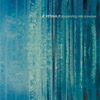 Having been around since the early part of the 1990s, this duo of Lino Monaco and Nicola Buono seem as if they took their cue from that periods isolationist movement, that darker, bleak spin-off of ambient that had a short, but brilliant life. Heavily effected loops, guitars, and synths float together in an inviting dissonance throughout this album's six tracks.
Having been around since the early part of the 1990s, this duo of Lino Monaco and Nicola Buono seem as if they took their cue from that periods isolationist movement, that darker, bleak spin-off of ambient that had a short, but brilliant life. Heavily effected loops, guitars, and synths float together in an inviting dissonance throughout this album's six tracks.
Opener "Synth on Axis" (with guest collaborator Heidseck) and the closing title track embrace the album title literally, both conjuring images of drifting through aquatic murk.Slow, bubbling reverberations, bass heavy swells, and unidentifiable sounds slithering by feel like the oceanic equivalent of Thomas Köner's Arctic endeavors.
"Attrazione Magnetica" takes that sense of drift and exploration and casts it in a more cosmic sensibility.Loops of rhythmic guitar, heavily filtered and processed, arrive to just drift away again into the darkness.Between the overall darker mood and the erratic, sub bass swell that is monstrous on its own, there is a more sinister feel overall, although here it is blackness of space rather than our own seas.
The remaining pieces don't have as much of an environmental reference point, but instead construct slowly evolving ambient passages from heavily treated loops."Freezing the Fourth String" begins simple enough, with an unending droning note that becomes more and more prominent, slowly augmented with other abstract loops, before finally what sounds like a symphonic sample is added in, casting everything in a much more melodic direction before slowly concluding.
"Moonshine" similarly takes its time, building upon a simple, but progressing melodic loop.There is just the right balance of repetition and change:it stays static enough to lock into a hypnotic groove, but slowly works in additional sounds so that, by the end, it sounds significantly different than how it began.
Isolationist ambient constructed from loops can be a difficult proposition:one of the reasons the genre died out so quickly is that almost everyone with a sampler and a reverb unit tried their hand and putting out an album, and too often the result was a boring sonic equivalent of beige wallpaper.While Retina.it are not necessarily revolutionizing the genre with Descending Into Crevasse, it makes for a strong nod to a sound that time forgot, and had it been released during that period, it would have been clearly on the better end of that genre’s spectrum.
samples:
 
Read More
- Duncan Edwards
- Albums and Singles
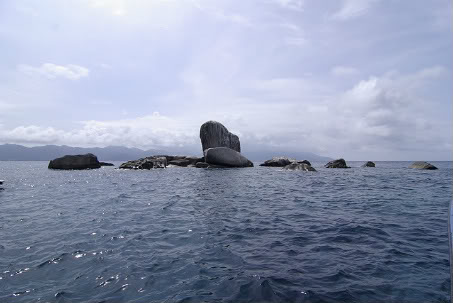 I don't know if there is much surfing in their Massachusetts location but Zebu!'s eighth record is mainly powered by waves of surf-instrumental tunes. Chill Wave twists a retro beach party vibe into something more bracing, brooding, and raw: as suggested by the LP cover with overcast sky and big lump of rock sticking up out a cold, dark stretch of ocean.
I don't know if there is much surfing in their Massachusetts location but Zebu!'s eighth record is mainly powered by waves of surf-instrumental tunes. Chill Wave twists a retro beach party vibe into something more bracing, brooding, and raw: as suggested by the LP cover with overcast sky and big lump of rock sticking up out a cold, dark stretch of ocean.
The core duo of Steve D'Agostino and Ted Leo are joined by bass players Jonathan Granoff and Stephen Surrett along with Peter Van Siclen on saxophone and they all whip up a trash aesthetic that thankfully avoids annoying slovenliness. Not everyone enjoys the saxophone in rock music but Zebu! combine guitars well with the abrasive honking for a sound that is refreshing and exciting without seeming over-muscled.
A couple of contrasting slower pieces allow for vocals and "Crown Heights" might even be described as country-surf, but generally Zebu! keep things brisk and succinct. Ultimately it doesn't matter if this record were recorded by people with sand in their hair and fresh out of a wetsuit. We can't all be Dennis Wilson, and elements of surf music are audible across the last 50 years of popular music from Phil Spector and Joe Meek to Jesus & Mary Chain, none of whom have been anywhere near a surfboard.
This broad context is where the odd out-of-time Chill Wave fits, if anywhere, and certainly more so than a music sub-genre of calming neon-club repetitive beats which the title might appear to indicate. The LP is in an edition of 300 and a fine reminder of how great it is to hold a piece of vinyl, admire decent-sized cover art, and not have to squint to read minuscule words on a CD booklet.
Read More
- Administrator
- Albums and Singles
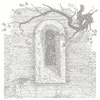 Æthenor’s En Form for Blå was one of my favorite albums of 2011, and it was the first time Stephen O’Malley and Steve Noble collaborated on record. St. Francis Duo documents their second meeting, a pair of live performances at London’s Cafe OTO recorded over two nights in August, 2010. With only guitar, percussion, and some distortion, O’Malley and Noble punch out over an hour of very raw and dynamic improvised music. Like their work together in Æthenor, it hews closer to the rock spectrum than to jazz or other kinds of improvised music, but it is their quieter interactions that make this album so satisfying.
Æthenor’s En Form for Blå was one of my favorite albums of 2011, and it was the first time Stephen O’Malley and Steve Noble collaborated on record. St. Francis Duo documents their second meeting, a pair of live performances at London’s Cafe OTO recorded over two nights in August, 2010. With only guitar, percussion, and some distortion, O’Malley and Noble punch out over an hour of very raw and dynamic improvised music. Like their work together in Æthenor, it hews closer to the rock spectrum than to jazz or other kinds of improvised music, but it is their quieter interactions that make this album so satisfying.
I was blown away by Noble’s performance on Æthenor’s En Form for Blå. His drumming made that album, in part because it provided such a strong foundation for his band mates. It was also virtuosic, meticulous, and totally unique. Noble brings that same leadership and energy to St. Francis Duo, which was recorded with Stephen O’Malley at Cafe OTO two months after the En Form sessions ended. But, when I read that Daniel O'Sullivan and Kristoffer Rygg were not involved, I wondered just how Noble and O’Malley were going to react to each other. I imagined droning feedback and whirlwind percussion passing like ships in the night.
St. Francis Duo sounds excellent, though, and it sounds excellent because Noble and O’Malley find a subtle way to make their styles work together. From beat one Noble makes it clear that he’s not going to be swallowed up by O’Malley’s guitar. He pounds out loud, absolutely manic rhythms on his toms, snare, and cymbals for close to three minutes before settling into a dizzying procession of smaller percussive noises. Throughout the record, he answers O’Malley’s more frenzied moments with huge slashes of reverberating metal, thumping bass kicks, and generally unhinged fills, but he also directs the action with his battery of brushes, wires, tuning forks, and rattles.
O’Malley also begins furiously, with feedback and in-the-red string mashing. When Noble shifts gears, he reacts coolly. He turns down the volume and dials back the intensity, switching to a series of slowly played half-melodies made up of dissonance and little bouts of fumbled rhythm. As time passes and Noble moves further into the spotlight, Stephen’s playing becomes close to silent, and there are times when I can almost hear him deciding to pluck a string. Noble’s playing remains tense and propulsive, though, even when O’Malley is at his most reserved. He provides a feeling of forward motion with every sound he makes, even the tiniest ones, so that by the end of the first set he’s put the duo in an ambiguous place. This is improvised music, but with a heavy metal feel that comes almost entirely from the drummer, who is probably best known for playing with musicians like Derek Bailey, Lol Coxhill, John Edwards, and Alex Ward. Hearing him work with O’Malley in this style is awesome, and it further convinces me that he’s one of the best percussionists going.
On the second night, O’Malley returns the favor as the music veers a little further away from the rock ‘n’ roll vibe. Steve and Stephen still give the audience some noisy passages to chew on (side D closes the album with a bang), but the best action takes place when O’Malley opens his playing up even more and ventures into atmospheric territory. Stephen’s restraint gives Noble the chance to show off his dynamics more, but it also forces him to play the guitar in a way I’ve never heard him play it, and it sounds great. He still pulls a drone and a chord or two from his six-string, but without high volumes to lean on, he has to find other ways to respond to Noble’s never-ending variations. I can’t tell for sure, but I think O’Malley might have even stuck a fork or screwdriver between his strings at one point, perhaps imitating the way Noble treats his drums. Should O’Malley choose to continue down this path on future recordings, I would be anxious to hear it. St. Francis Duo is more strong evidence that he doesn't need robes or amps that go to eleven to make great music.
samples:
 
Read More


